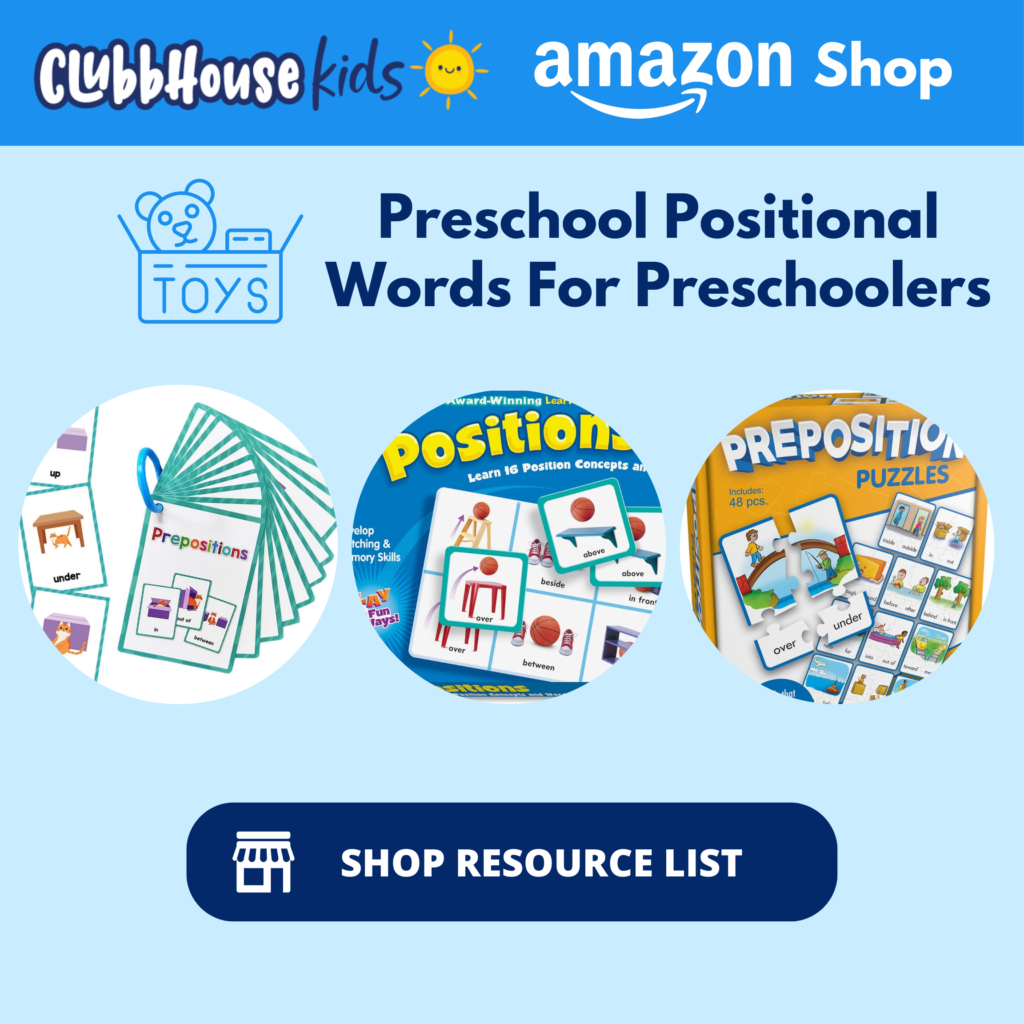Mastering Positional Words: 10 Ready-to-Use Preschool Math Lesson Plans
Teaching positional words is essential to preschoolers’ spatial awareness and math development. When young children learn to identify positions—like above, below, beside, and under—they’re building the foundation for future math and literacy skills. However, creating engaging, age-appropriate activities can be challenging for busy teachers. That’s why we developed the Positional Words Preschool Math Activities resource: to provide 10 detailed lesson plans that give teachers everything they need to teach this concept confidently.

1. Why Teaching Positional Words Matters for Preschoolers
Teaching positional words goes beyond vocabulary—it’s about helping young learners understand their place in space. These terms support cognitive development, visual-spatial skills, and the ability to follow directions, all crucial in preschool and beyond. Studies show that spatial language exposure improves math and problem-solving skills. Our Positional Words Preschool Math Activities give teachers a comprehensive way to introduce, practice, and master these terms through play-based learning.
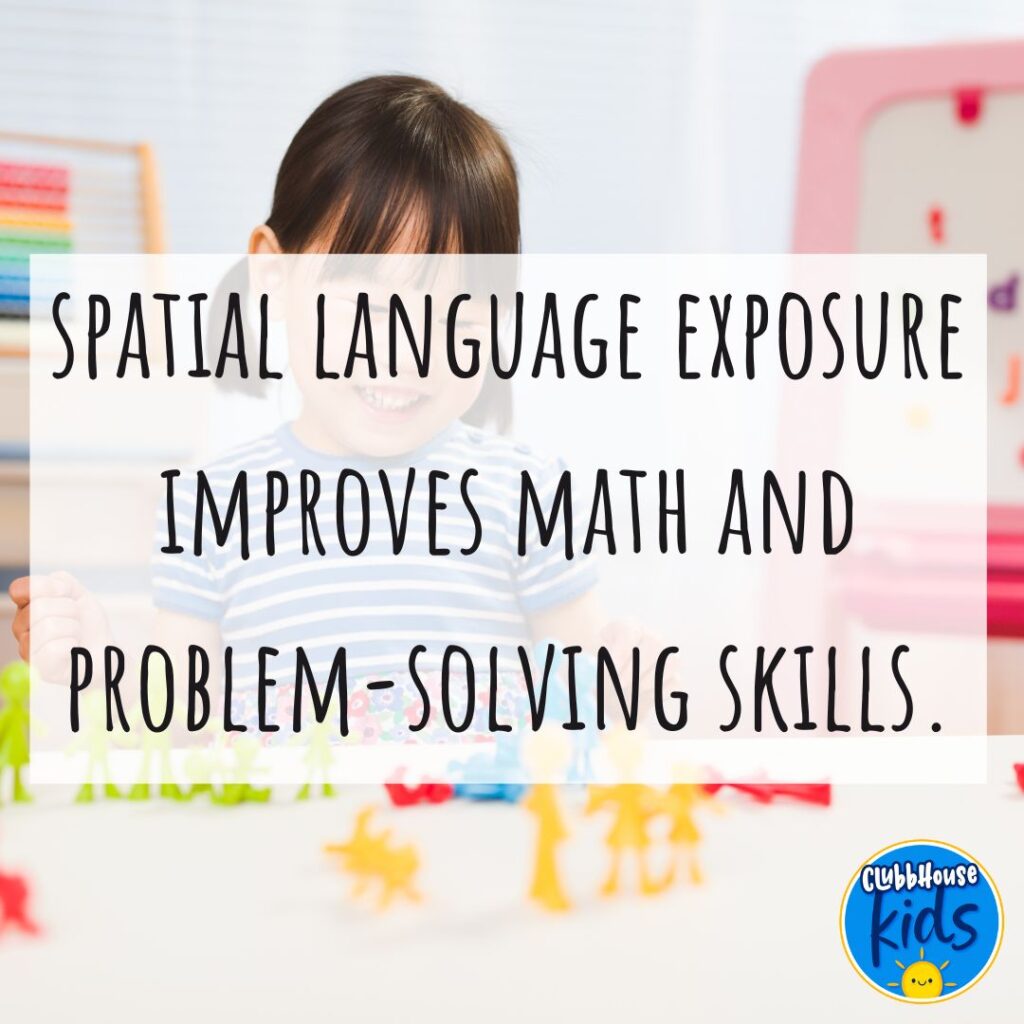
2. What’s Inside the Positional Words Preschool Math Activities Resource
Each of the 10 lesson plans in this resource is crafted to make positional words fun and easy for preschoolers to understand. Here’s what you can expect:
- Clear Learning Objectives – Each lesson starts with specific goals, so you know exactly what students will learn.
- Engaging Hands-On Activities – Each lesson is filled with interactive activities that use manipulatives, real-world objects, and creative setups to reinforce positional words.
- Differentiation for Various Learning Levels – Tailored instructions help teachers adapt lessons for different skill levels, perfect for a multi-age classroom.
- Step-by-Step Instructions for Teachers – You’ll find detailed instructions that make preparation a breeze, letting you focus on engaging your students.
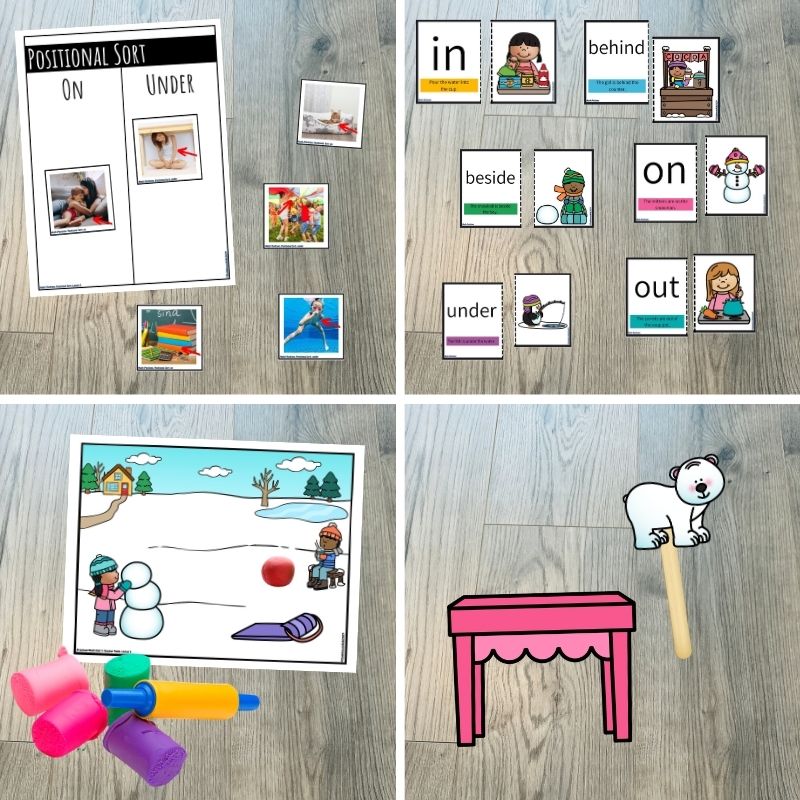
3. How to Use the Positional Words Resource in Your Classroom
With the activities laid out in this resource, you can bring positional words to life in multiple ways:
- Whole Group Activities: Start with a circle time discussion where students can practice using positional words to describe objects.
- Small Group or Independent Centers: Set up different stations using provided materials to encourage individual exploration of positional concepts.
- Circle Time Games and Songs: This resource includes prompts for interactive circle time games that introduce spatial concepts in a playful and memorable way.
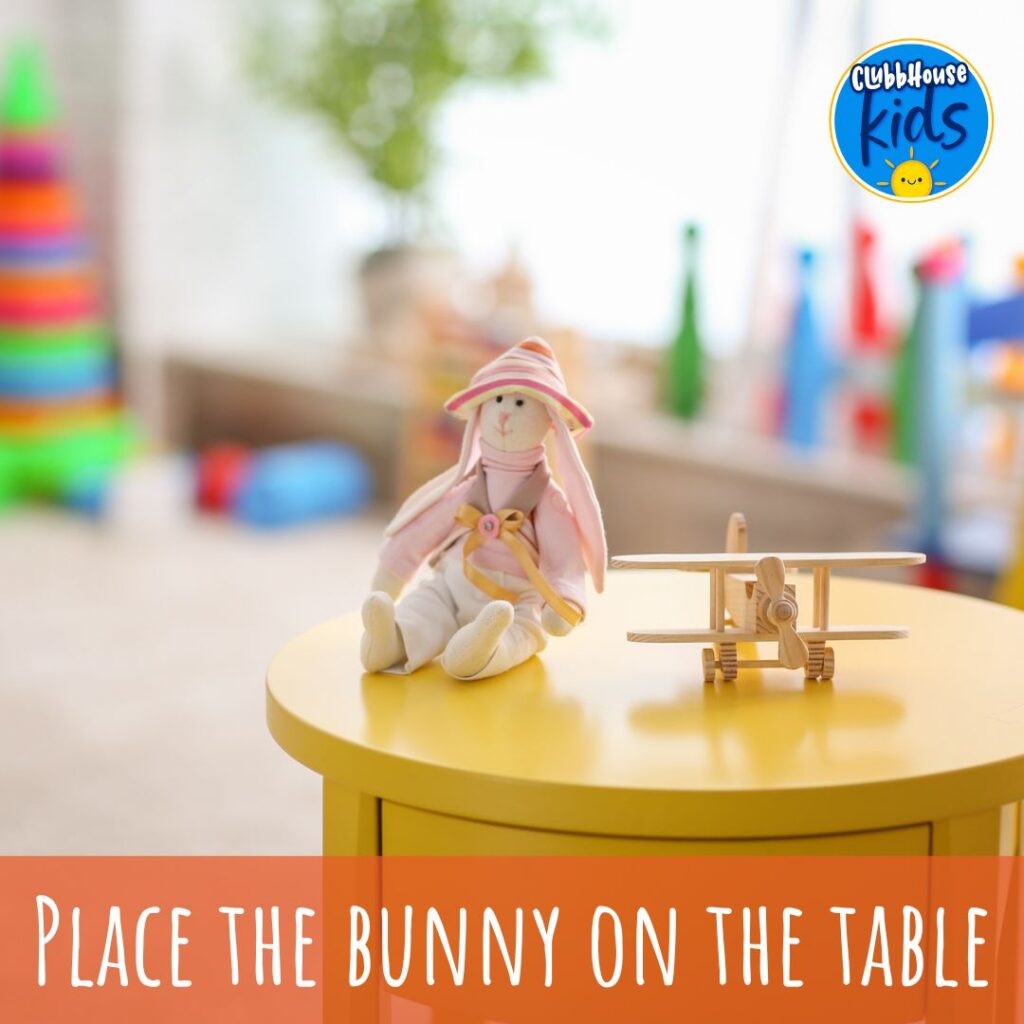
4. Benefits of Our Positional Words Preschool Lesson Plans
Here’s how our resource stands out:
- No-Prep for Busy Teachers: Each lesson is ready to go—just print, prep materials, and teach.
- Aligned with Early Math Standards: The activities align with preschool math standards for spatial awareness, giving you confidence that your students are mastering critical skills.
- Fun and Engaging for Preschoolers: The lessons are playful and sensory-rich, keeping young children engaged while they learn.
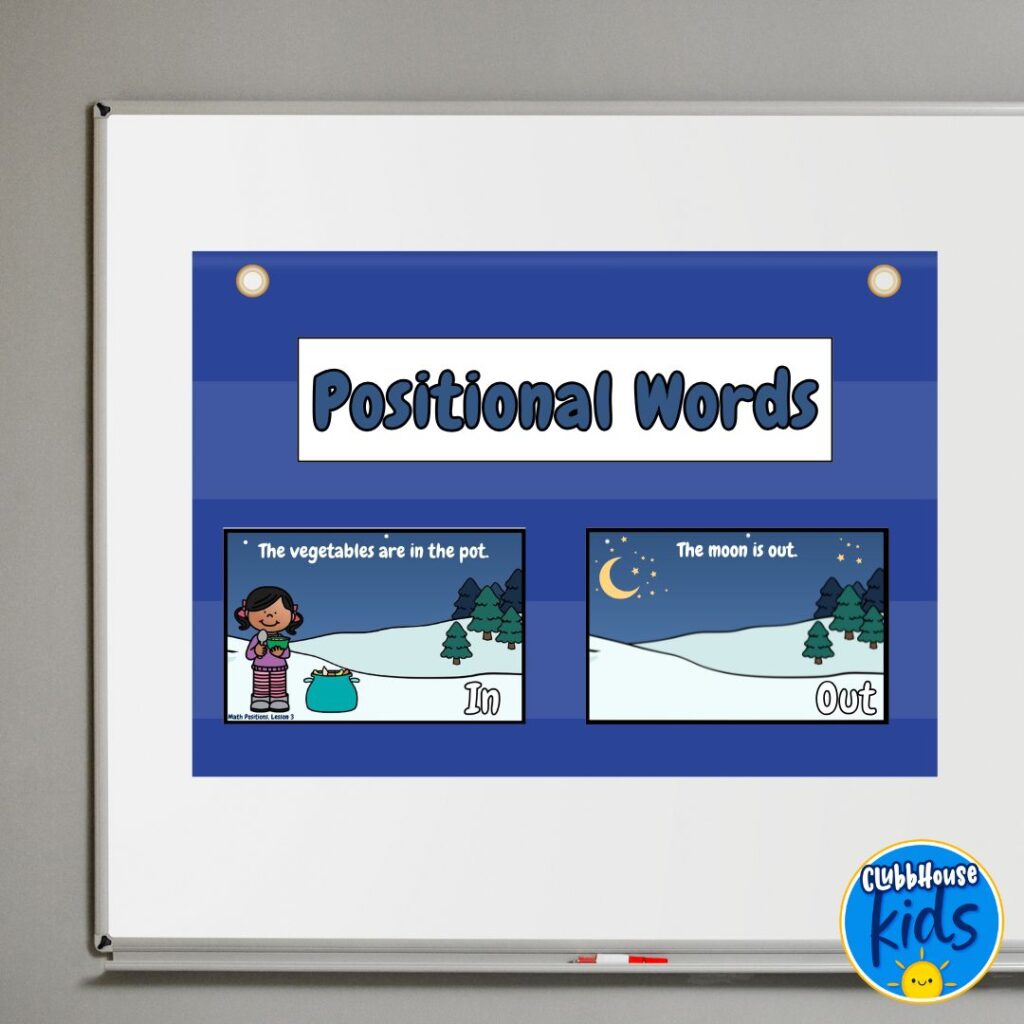
5. Classroom Proven Tips for Teaching Positional Words
Incorporating positional words into your daily routine can make learning even more effective. Here are a few ways to reinforce this concept with young learners:
- Daily Language: Use positional words frequently in your own instructions to students, such as “Please put the book on the shelf” or “Stand beside me.”
- Interactive Games: Try games like “Simon Says” or “Where’s the Object?” to make learning active and fun.
- Read Aloud Books: Stories with positional words (e.g., Over, Under, and Through) provide context, helping kids understand each term’s meaning.
Check out my favorite preschool positional books and more.

6. Ready to Make Teaching Positional Words Easy? Try Our Resource Today!
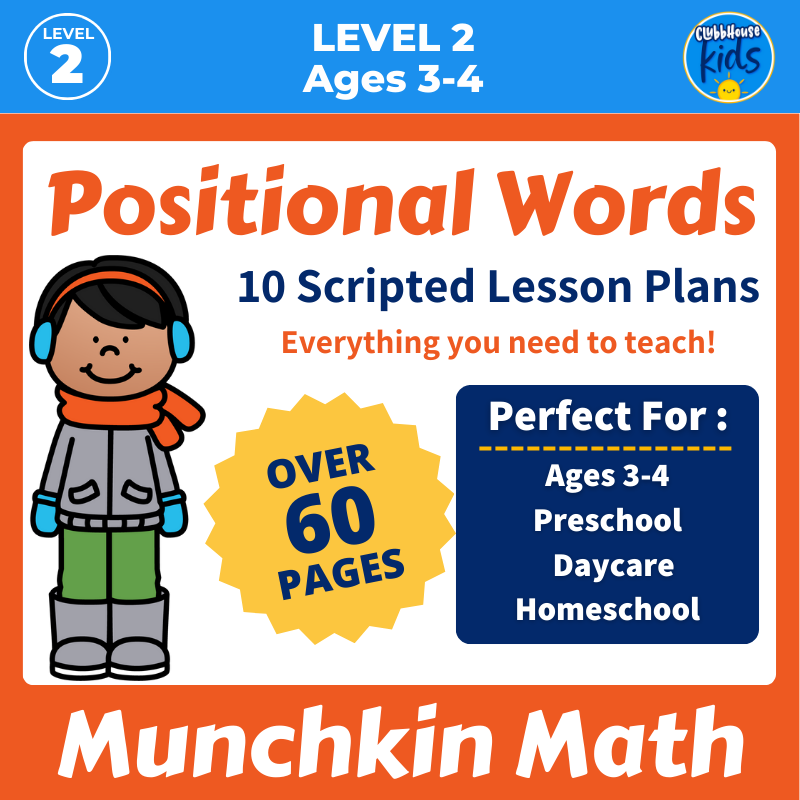
If you’re ready to add these hands-on, effective lessons to your preschool math toolkit, head over to CLUBBHOUSEKIDS TPT STORE to get your copy of the Positional Words Preschool Math Activities. These no-prep lesson plans offer everything you need to teach positional words with ease.

